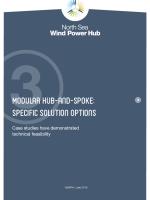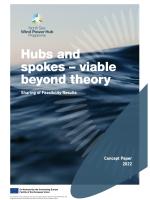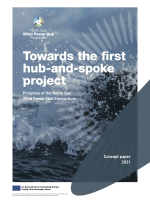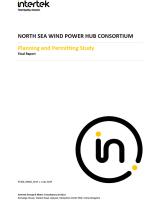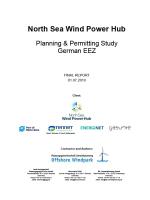Concept paper 3: Modular Hub-and-Spoke: Specific solution options
Case studies have demonstrated technical feasibility
The Hub-and-Spoke concept needs to be translated into feasible project solutions. A conceptual design of a Hub-and-Spoke project depends on many factors including:
- Location and physical environment
- Proximity and capacity of offshore wind farms that the hub is required to support
- Final energy demand requirements and transmission capacity and special restrictions at onshore connection points
- Interconnection requirements of surrounding countries
- And required permitting and commissioning timelines of the Hub-and-Spoke projects
At this moment there is a lack of concrete transmission asset project commitments, spatial planning coordination and a clear and steady roll-out of offshore wind deployment beyond 2030. This introduces uncertainty as to which technical option of the Hub-and-Spoke concept is favourable. Considering this uncertainty, the consortium investigated different technical options to demonstrate technical feasibility of the concept. The Hub-and-Spoke concept has been demonstrated feasible for different locations, sizes and configurations.
From a techno-economic perspective an optimal hub size is in the range of 10-15 GW of connected offshore wind farm capacity. Hub structures can be based on different foundation types: sand island, caisson island and platforms, using a jacket or gravity-based structure as foundation. Island-based foundations can enable larger scale interconnection hubs at relatively lower costs. However, the smaller platforms can reduce environmental impact, planning risk and construction timelines.
Different hub configurations were investigated by the consortium: all-electric transmission, fully hydrogen and combined electricity and hydrogen transmission. Also, four locations were assessed by the consortium, to test location specific conditions on hub design. The desktop studies found that a technically feasible solution could be designed for each of the physical conditions encountered at the four locations.
